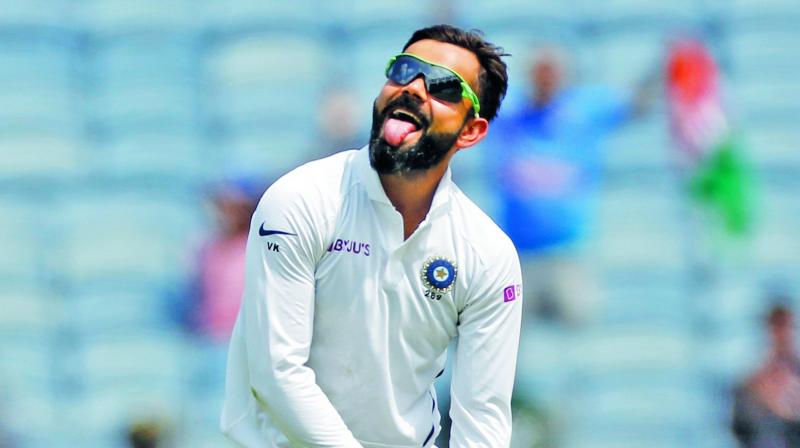How far can Bradmanesque Kohli go?
Kohli’s 26th century was also his seventh double ton, all scored between 2016 and now, which shows his growth trajectory as a batsman.

Virat Kohli’s 26th Test century brought in its wake an avalanche of dizzying statistical highlights and landmarks that have left expert and layman gasping in wonder: how far can he go, how much will he finish with?
I imagine this will be a recurring question for the remainder of his career. Kohli’s gone past 7000 runs, still some way behind in Test run aggregate and number of centuries, both headed Sachin Tendulkar. But his galloping success is becoming a serious threat to the player he idolized while growing up.
Kohli is still a month shy of turning 31, which gives him 7-8 years more at this level. Given his fitness levels, unquenchable passion for the game and deep ambition, what he could achieve further simply boggles the mind. Moreover, he excels in all three formats, which adds more dimensions to his cricketing persona.
In Test cricket alone, suffice to say, barring injury or sudden loss of form/zest, he could be holding virtually all batting records barring Test average where the peerless Don Bradman with 99.94 I venture is unassailable, perhaps for all time.
Kohli has serious competition, of course. Joe Root, Steve Smith and Kane Williamson join him to form a quartet of outstanding batsmen in contemporary cricket. They are not only the best of their respective teams, but also locked in a contest of one-upmanship (not said pejoratively) which is fascinating to follow.
Kohli’s 26th century was also his seventh double ton, all scored between 2016 and now, which shows his growth trajectory as a batsman. It was a masterly knock, full of sumptuous strokes, especially in front of the wicket, and superbly paced to ensure that the pressure on the South African bowling didn’t ease.
It was not Kohli’s career best innings in my reckoning. This South African attack, barring Rabada is tepid at best. Kohli’s runs in South Africa in early 2018, England (2018) and Australia (in 2014-5 and 2018) had a far greater difficulty quotient — and hence value — attached to them because of the quality of bowling and pitches he faced.
Nevertheless, his knock at Pune signals not just a return to his best after a middling 2019 so far, but with ambition refueled to take bigger strides going ahead. The more important aspect, however, was the timing of his declaration.
With the South African bowlers wilting, and so much time remaining in the match, Kohli could so easily have chased a triple century, a milestone that every batsman covets, but very, very few have reached. He chose instead to pick up wickets by applying pressure on the mentally and physically jaded batsmen.
This is not to say that Kohli is not averse to personal milestones. I had an interesting conversation with coach Ravi Shastri before this series started where he highlighted that Kohli was acutely conscious of where the game is headed, how other leading batsmen are faring, how he could score more runs different situations and against different bowlers.
“He is tremendously self-motivated and extremely competitive,’’ Shastri told me. “He is learning all the time and wants to get so much better as to be the best. Steve Smith’s huge success in the Ashes will want him to raise his own form a notch higher I’m sure.’’
Perhaps this double century indicates that Kohli has intensified his desire to be acknowledged as the best. But in not craving for runs just for personal glory, he is influencing a massive cultural shift, not just in the current dressing room, but in Indian cricket for the future.
He is still growing as a captain, but what Kohli has done most laudably is demonstrate by example how personal ambition can be meshed with team interest. To avoid any potential conflict arising from this, the ground rule is clear: team interest must get priority at all times.
